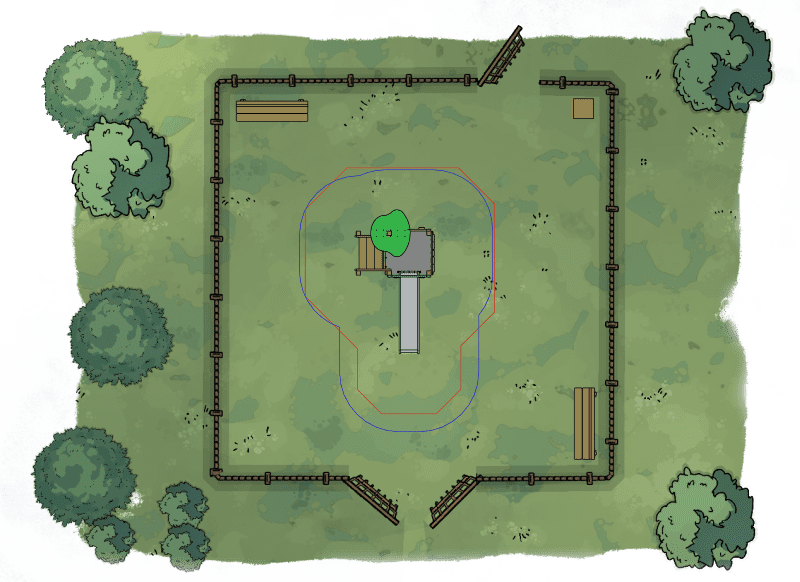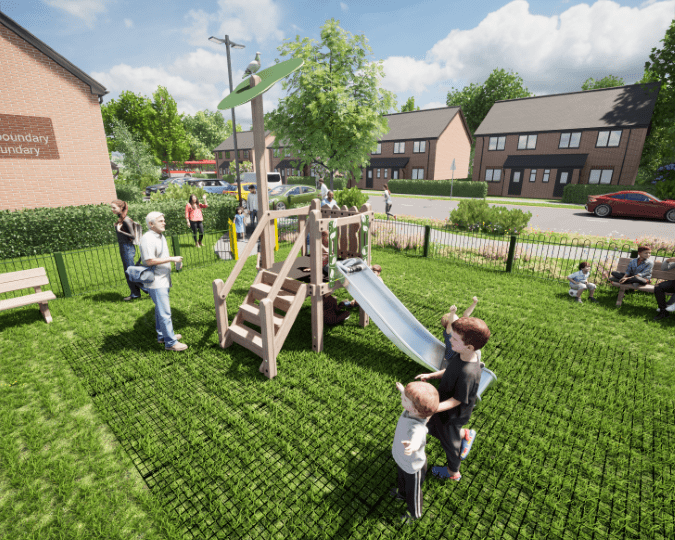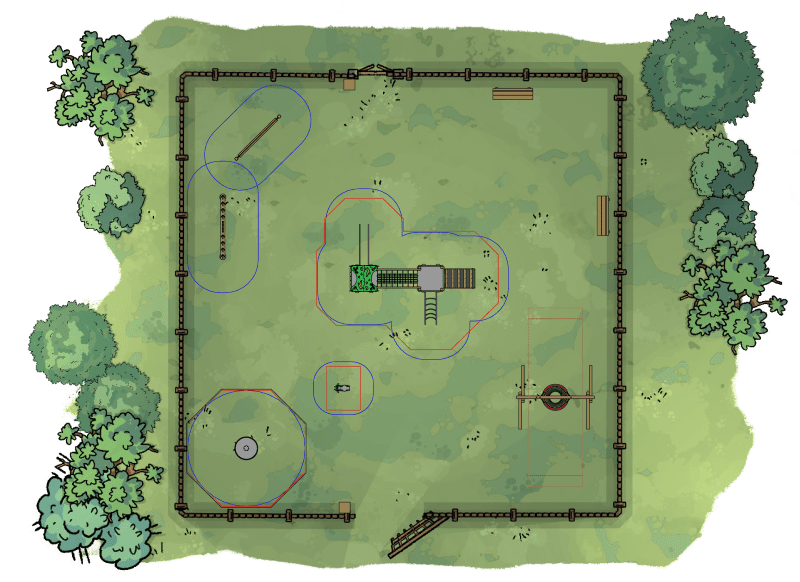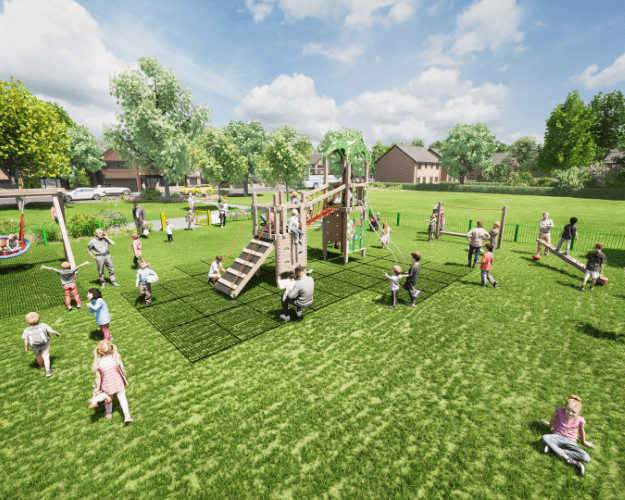Lap, Leap and Neap
LAPs (Local Area for Play), LEAPs (Local Equipped Area for Play) and NEAPs (Neighbourhood Equipped Area for Play) are terms coined by the NPFA (National Playing Field Association) to provide planning authorities with guidelines on recreational space in new housing developments.
LAPs (Local Area for Play)
- 1-minute walking distance of a well-used pedestrian route
- Created for children six and under
- Minimum activity zone of 100m² and a 5-metre buffer between this area and the surrounding properties
- Minimum height of fencing 60cm
- Contains seating for parents and carers
- Great solution for a newly built housing estate
 |
 |
LEAPs (Local Equipment Area for Play)
- 5-minute walking distance of a well-used pedestrian route
- Created for children who are beginning to go outside and play independently
- Minimum of six play experiences and at least three play items
- Minimum 400m² activity zone
- Space for active play within the boundary
- A 10-metre buffer between the area and house boundary, and 20 metres between the area and dwellings
- Fencing is included if the area is near a road
- Contains seating for parents and carers, and litter bins
 |
 |
NEAPs (Neighbourhood Equipped Area for Play)
- 15-minute walking distance of a well-used pedestrian route
- Play equipment targeted mainly at older children but should contain an area for younger users
- Minimum of eight play experiences and at least five play items
- A minimum 1000m² area divided into two sections - one for play equipment and an area of 465m² of hard surface (which is a minimum area for 5-a-side football)
- Space for active play within the boundary
- A 30-metre buffer between the activity area and the boundary of the nearest dwelling
- Fencing is included if the area is near a road
- Contains seating for parents and carers, plus litter bins and secure bicycle parking
- Suitable for already established communities
Here at Online Playgrounds, our talented designers have created some playgrounds specifically with these guidelines in mind. Please contact us for further information.

